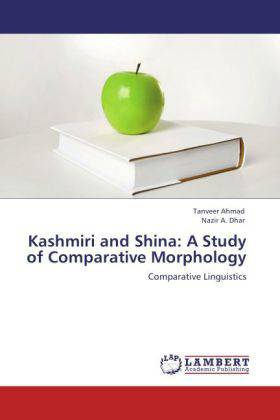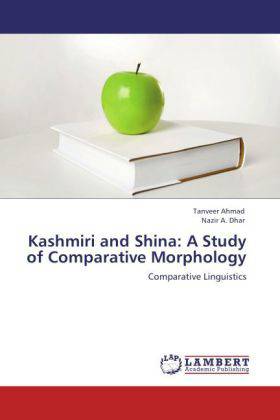
Je cadeautjes zeker op tijd in huis hebben voor de feestdagen? Kom langs in onze winkels en vind het perfecte geschenk!
- Afhalen na 1 uur in een winkel met voorraad
- Gratis thuislevering in België vanaf € 30
- Ruim aanbod met 7 miljoen producten
Je cadeautjes zeker op tijd in huis hebben voor de feestdagen? Kom langs in onze winkels en vind het perfecte geschenk!
- Afhalen na 1 uur in een winkel met voorraad
- Gratis thuislevering in België vanaf € 30
- Ruim aanbod met 7 miljoen producten
Zoeken
Kashmiri and Shina: A Study of Comparative Morphology
Comparative Linguistics
Tanveer Ahmad, Nazir A. Dhar
Paperback | Engels
€ 63,45
+ 126 punten
Omschrijving
Kashmiri and Shina have both been classified by Grierson (1919) as belonging to the Dard sub-group of the Dardic languages. Turner (1927: 533), while comparing Shina with its neighbouring languages reports that; This language- Shina- is closely related to Kashmiri . Colin P. Masica in his The Indo-Aryan Languages (1991: 297) reports; there is nothing special beyond Kashmiri: only Shina and its offshoot Phalura show gender in pronouns. Under Dardic Grierson includes the Kafir languages of Afghanistan and the Khowar and Dard group of present day India and Pakistan. The present work aims to highlight points of similarity between the Kashmiri and Shina at the level of morphology. The data for Shina have been taken from speakers of gurezi dialect of Shina thus most of the examples in the work would be from the gurezi Shina.
Specificaties
Betrokkenen
- Auteur(s):
- Uitgeverij:
Inhoud
- Aantal bladzijden:
- 104
- Taal:
- Engels
Eigenschappen
- Productcode (EAN):
- 9783847321750
- Verschijningsdatum:
- 19/12/2011
- Uitvoering:
- Paperback
- Afmetingen:
- 150 mm x 219 mm
- Gewicht:
- 155 g

Alleen bij Standaard Boekhandel
+ 126 punten op je klantenkaart van Standaard Boekhandel
Beoordelingen
We publiceren alleen reviews die voldoen aan de voorwaarden voor reviews. Bekijk onze voorwaarden voor reviews.









